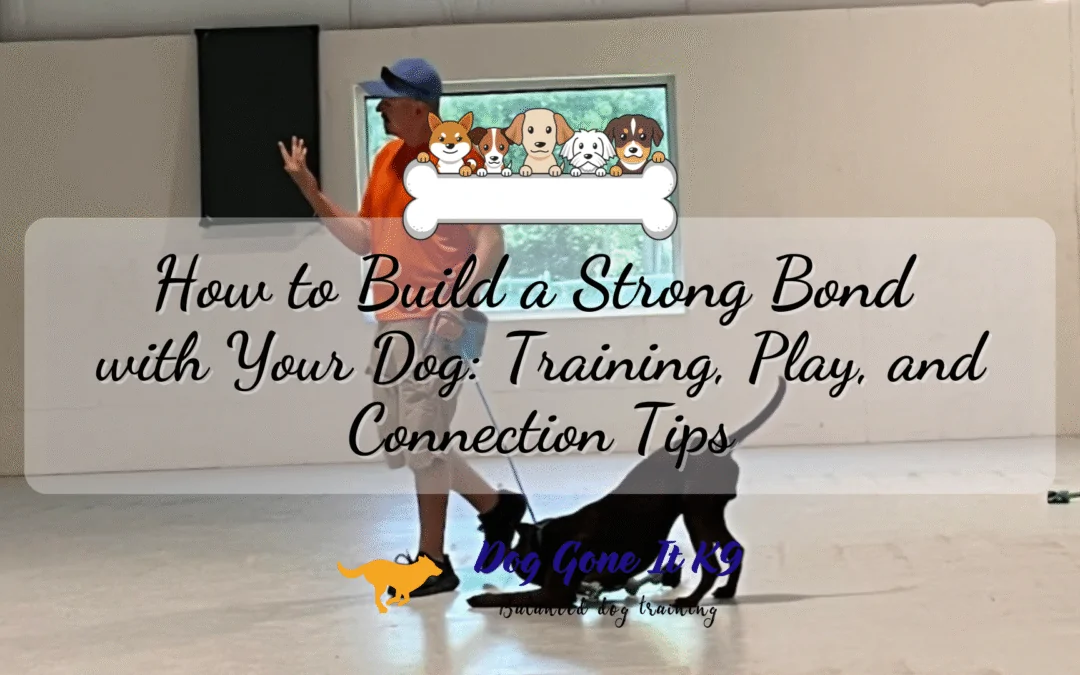Creating a strong bond with your dog is one of the most rewarding parts of being a pet owner. This connection enhances your relationship, makes training easier, and contributes to your dog’s overall happiness and well-being. In this guide, we’ll explore effective ways to build and recognize – a strong bond with your furry friend.
Why Is Bonding with Your Dog Important?
Bonding with your dog is about more than companionship. A strong connection:
- Improves communication, making training smoother and more effective.
- Reduces anxiety and behavioral issues, since your dog feels secure.
- Builds trust, allowing your dog to look to you for guidance in new situations.
- Strengthens your relationship, ensuring both you and your dog feel supported and happy.
Ultimately, a well-bonded dog is a happy dog, and a happy dog makes for a happy owner.
Ways to Bond with Your Dog
Spend Quality Time Together
Bonding starts with consistent interaction. Whether it’s a daily walk, a game of fetch, or simply lounging together, shared time tells your dog they are loved and safe. The more positive experiences you create together, the stronger the emotional connection becomes.
Engage in Play and Exercise
Playtime is one of the fastest ways to build trust and companionship. Activities like fetch, tug-of-war, or agility courses provide both physical exercise and mental stimulation. Play helps your dog see you as not just a leader, but also a fun and reliable companion.
Use Positive Reinforcement
Reward-based training builds trust. Treats, praise, and affection show your dog that listening to you leads to good outcomes. Over time, this creates a cycle where your dog is eager to please and feels safe learning from you.
Learn Your Dog’s Body Language
Dogs “talk” with their bodies. A wagging tail, soft eyes, or relaxed posture indicate comfort and trust, while stiff movements or tucked tails show unease. By paying attention to these cues, you can respond in ways that reassure your dog and deepen your connection.
Establish a Routine
Dogs thrive on predictability. A consistent schedule for meals, walks, and play helps your dog understand what to expect. This structure builds trust and lowers stress, which directly strengthens your bond.
Practice Training Sessions
Training is more than obedience ,it’s a bonding activity. Teaching new commands or tricks helps your dog build confidence while reinforcing your leadership. Keep sessions short, fun, and reward-based to make training something your dog looks forward to.
Show Physical Affection
Affection through petting, cuddles, or grooming isn’t just comforting — it’s backed by science. Gentle touch releases oxytocin, the “love hormone,” in both you and your dog, making the bond stronger with every interaction.
Signs Your Dog is Bonded to You
- They Make Eye Contact – Eye contact signals trust and affection. Dogs avoid it with those they don’t feel comfortable with.
- They Follow You Around – Whether you’re in the kitchen or heading to another room, a bonded dog wants to be close to you.
- They Seek Your Affection – Leaning, nudging, or pawing for attention shows your dog feels safe and comforted by you.
- They Respond to Your Cues – A strong bond means your dog listens to commands and looks to you for guidance.
- They Show Excitement When You Return – Happy greetings at the door are a clear sign your dog is deeply attached to you.
How Long Does It Take to Form a Strong Bond?
The time it takes to build a strong bond with your dog can vary widely depending on factors like age, breed, temperament, and life experiences.
- Puppies often bond quickly because they are in a developmental stage where they are learning trust, forming attachments, and relying on you for guidance. Research shows that puppies exposed to consistent care and positive socialization in their first 3–16 weeks develop stronger, healthier relationships with their owners.
- Adult dogs, on the other hand, may take longer to bond, particularly if they have had multiple owners or negative past experiences. Dogs rescued from shelters or challenging backgrounds often need extra time to learn trust, but with patience and consistency, they can form deep, loyal attachments.
- Consistency and Positive Experiences are the key drivers. Studies in animal behavior suggest that dogs bond most effectively with owners who engage in daily play, training, and affectionate interactions. Dogs are also highly responsive to routine – predictable feeding, walks, and training help them feel secure, which speeds up the bonding process.
For some dogs, the bond can begin forming within a few weeks; for others, it may take several months to a year before trust and attachment are fully established. Regardless of the timeline, showing kindness, patience, and reliability ensures that the bond you build is strong and lasting.
Building a strong bond with your dog is a journey, not a race. With patience, consistency, and love, your dog will learn to trust you fully – creating a connection that enriches both of your lives.
At Dog Gone It K9, we specialize in training methods that not only teach obedience but also build trust and strengthen the bond between dogs and their owners. Whether you’re raising a new puppy or working with a rescue, we’ll guide you in creating a lifelong connection based on respect and love.
👉 Contact Dog Gone It K9 today to start building the unbreakable bond your dog deserves.

